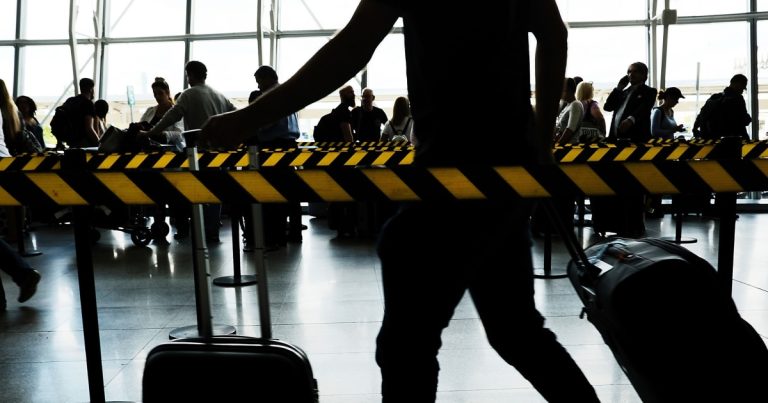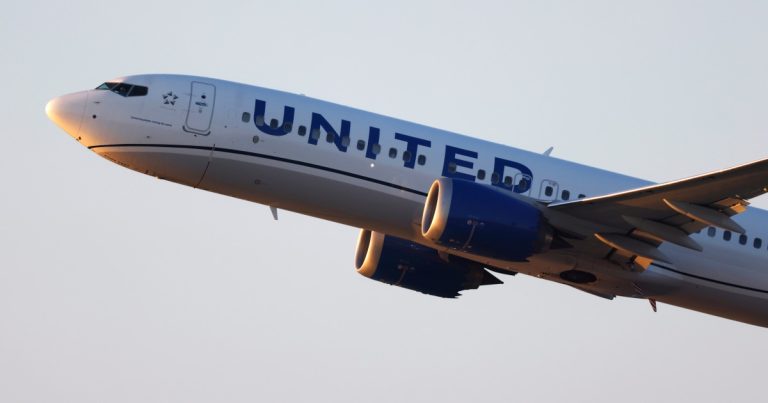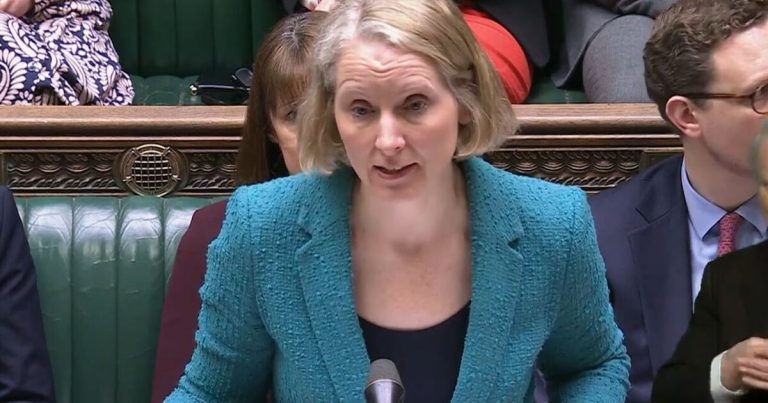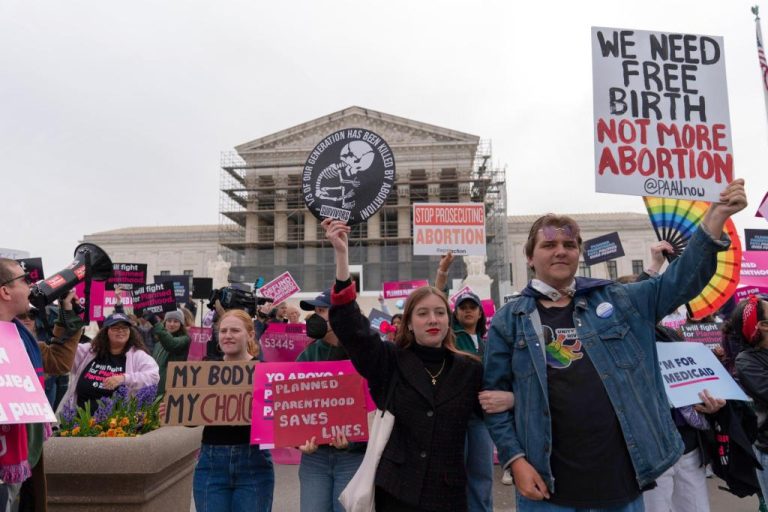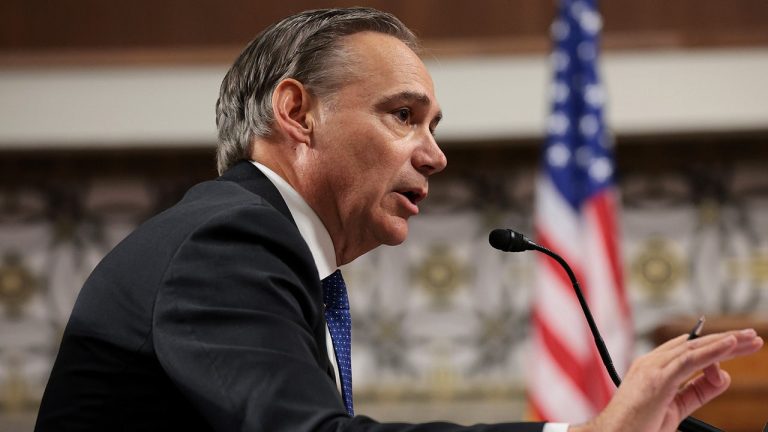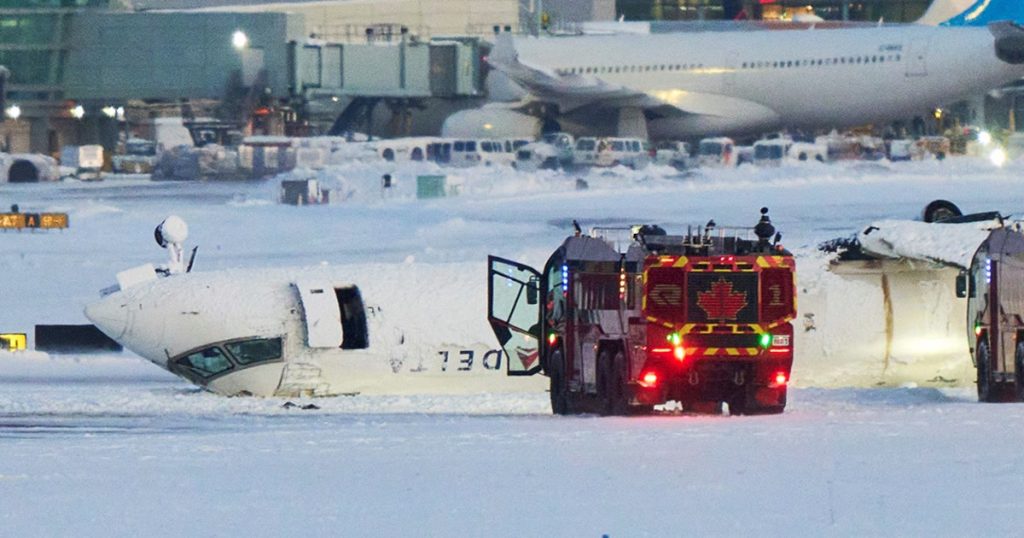
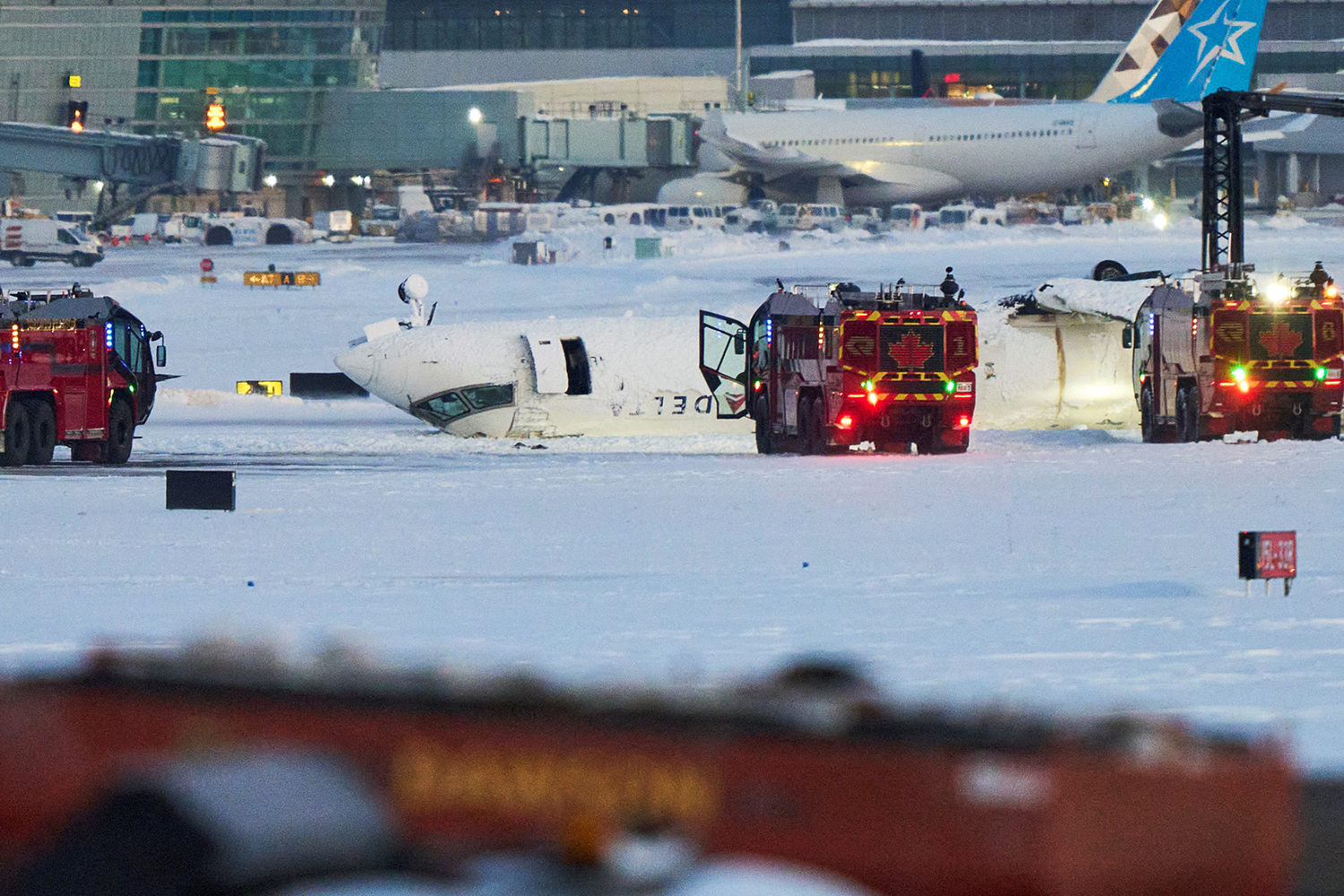
A passenger aboard the Delta flight that flipped upside down in a crash-landing in Toronto on Monday recalled how within seconds of the wheels touching down, his body was turned fully sideways and he and other passengers were left dangling by their seat belts.
Pete Koukov recorded video of the moment he and other passengers were shuffled out through the emergency exit of the flipped plane onto the tarmac covered in patches of snow at Toronto Pearson International Airport.
“I didn’t really notice anything wrong until the moment we hit the ground,” Koukov said on the “TODAY” show Tuesday morning. “The wheels touched down … I was in the window seat on the lookers left side, and then all of a sudden, I just remember being fully sideways.”
“I was looking down and just seeing like sparks and flames and whatever was grinding against the ground. It happened pretty dang quick and we were just upside down, hanging from our seat belts,” he recalled.
Delta Air Lines said 21 injured passengers were initially transported to local hospitals, and as of Tuesday morning 19 have been released. There were no fatalities in the landing of Flight 4819, that carried 80 people 76 passengers and four crew members, Delta said.
Some of the common reported injuries responding paramedics encountered included back sprains, head injuries, anxiety, nausea and vomiting due to fuel exposure, Cory Thatch, commander of operations with Peel Regional Paramedic Services said in a Tuesday news conference.
The flight was operated by Endeavor Air and had arrived from Minneapolis-St. Paul International Airport when it crashed upon landing in Toronto around 2:15 p.m., the Federal Aviation Administration said. Endeavor is a “wholly owned subsidiary of Delta Air Lines headquartered in Minneapolis,” according to Delta.
Koukov said that he and the other passengers on board were hanging upside down, secured only by their seat belts.
“Obviously we ended up upside down, and everyone was wearing their seat belts as they should have been, including myself,” Koukov said.
“I remember just hanging there and me and the lady next to me, we got out pretty quick. We were kind of able to just like, unclip, like you would, and then just kind of lower ourselves to be on the ground, which was the roof, I guess,” he added. “We did it really quickly, like, within stopping we both immediately kind of got our bearings, unclipped, got down.”
Passengers were only hanging for about a minute before they were told they could dismount.
“At that point, people were feeling pretty frantic, but everyone was obviously able to get down. Most people needed help, I think, from someone who had already got down, and then we kind of just slowly moved off the plane.”
He commended the flight attendants for a “pretty organized” evacuation of the plane.
“Everyone got off in a pretty orderly fashion. It didn’t seem too insane once the plane had stopped and everyone realized, for the most part, they were OK because no one was seriously injured,” Koukov said.
It’s not clear what caused the crash, but at the time wind gusts reached close to 40 mph amid blowing snow and minus 2 degrees wind chill. While lake-effect snow impacted the area earlier in the day, no snow was reported on radars at the time of the accident.
From last Thursday to Sunday, Toronto Pearson saw extreme conditions with two separate snowstorms and saw more than 20 inches of accumulated snow, Deborah Flint, the president and CEO of Toronto Pearson Airport, said Tuesday. She called that amount “not typical” and more than received all of last winter.
Flint said teams from Delta and Mitsubishi, the maker of the CRJ-900 aircraft, were on site along with investigators from Canada’s Transportation Safety Board and the U.S. Federal Aviation Administration.
The Transportation Safety Board of Canada will investigate the crash with assistance from the U.S. National Transportation Safety Board.
Flint said investigators are expected to review the aircraft in its current configuration on the runway for the next 48 hours, after which it’ll be removed and the runways reopened.

